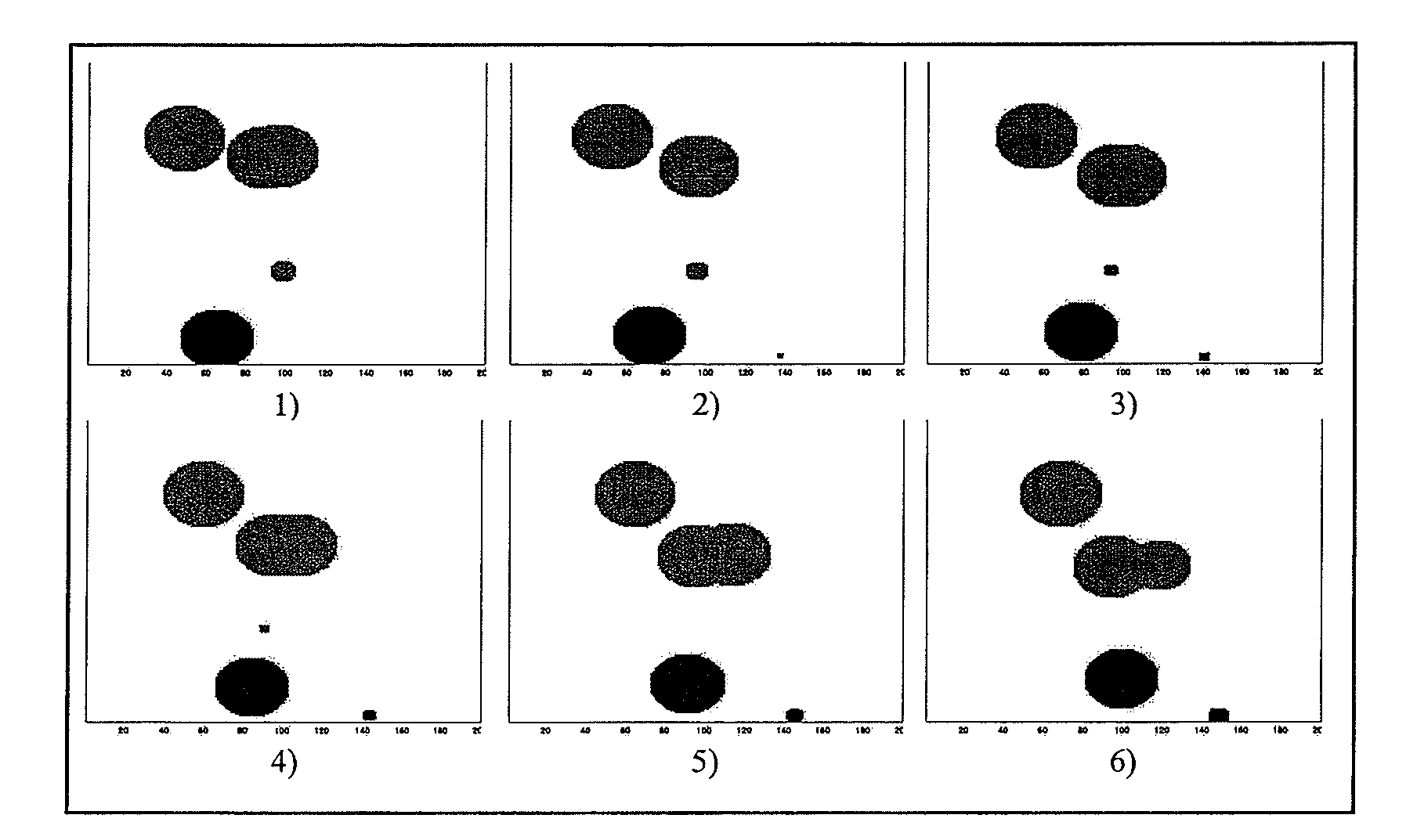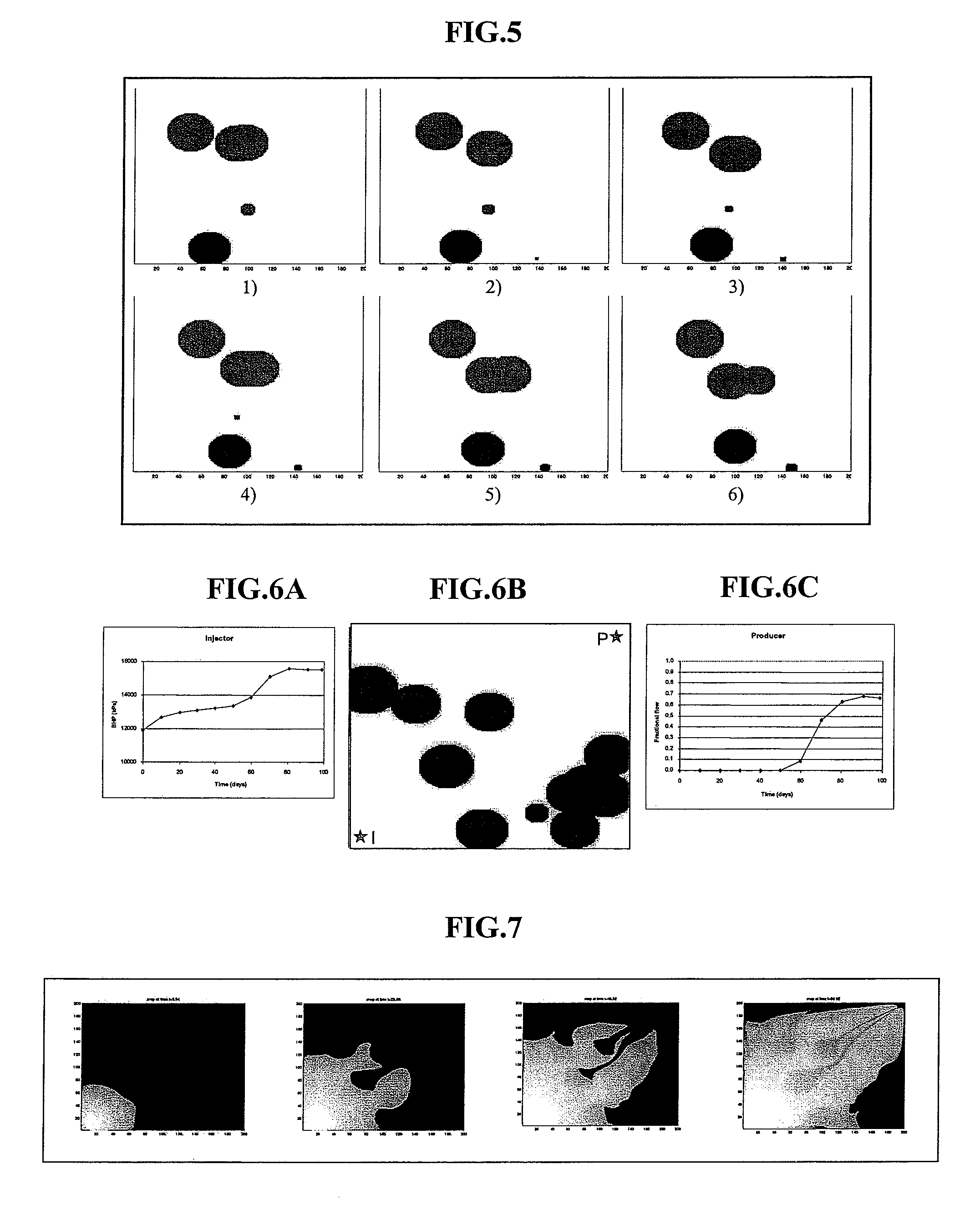Method intended for gradual, deformation of a boolean model simulating a heterogeneous medium, constrained to dynamic data
a boolean model and heterogeneous medium technology, applied in the field of gradual deformation of a boolean model simulating a heterogeneous medium, constrained to dynamic data, can solve the problems of severe difficult implementation of gradient techniques conventionally used for carrying out minimization processes, etc., to facilitate the setting up of gradient-based optimization algorithms, reduce the effect of possible discontinuities of objective functions
- Summary
- Abstract
- Description
- Claims
- Application Information
AI Technical Summary
Benefits of technology
Problems solved by technology
Method used
Image
Examples
Embodiment Construction
[0047]Gradual Deformation of the Number of Objects
[0048]The objects migration technique is a first move towards gradual deformation of Boolean simulations. One of its limits is that the number of objects is assumed to be constant during deformation. Solutions are disclosed to progressively modify the number of objects that populate a model (See patent application N-01 / 03,194 or Hu, 2003 mentioned above). However, one limit of these developments is that the objects appear or disappear suddenly, which can generate severe discontinuities of the objective function. The gradual deformation method according to the invention allows, as described below, reduces this discontinuity and thus facilitates the implementation of gradient-based optimization techniques.
[0049]Poisson's Law
[0050]Our objective is to gradually deform the number of objects for a Boolean simulation. This number is a random number and follows a Poisson's law, i.e. the probability for this (non-negative) number to be n is:
[...
PUM
 Login to View More
Login to View More Abstract
Description
Claims
Application Information
 Login to View More
Login to View More - R&D
- Intellectual Property
- Life Sciences
- Materials
- Tech Scout
- Unparalleled Data Quality
- Higher Quality Content
- 60% Fewer Hallucinations
Browse by: Latest US Patents, China's latest patents, Technical Efficacy Thesaurus, Application Domain, Technology Topic, Popular Technical Reports.
© 2025 PatSnap. All rights reserved.Legal|Privacy policy|Modern Slavery Act Transparency Statement|Sitemap|About US| Contact US: help@patsnap.com



